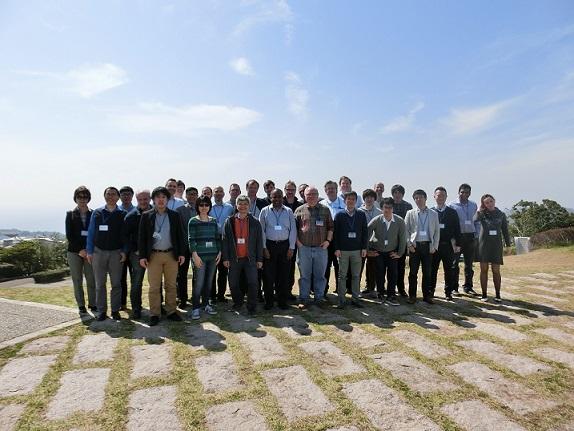NO.114 Resilient Machine-to-Machine communication
March 26 - 29, 2018 (Check-in: March 25, 2019 )
Organizers
- Mayutan Arumaithurai
- University of Goettingen, Germany
- Toru Hasegawa
- Osaka University, Japan
- Stephan Sigg
- Aalto University, Finland

Overview
Focus of the meeting and Rationale
Machine-to-machine (M2M) interactions such as wearables, vehicular networks and smart homes will constitute more than a third of the total internet connections1. These Internet of Things (aka Industrial Internet, aka Industry 4.0, …) networks are rapidly growing in complexity and continuing to extend into the personal and private domain. Fuelled by the numerous sensors interconnected, massive amounts of Big Data need to be managed, routed and processed efficiently, for instance, supported by the network edge or fog computing concepts.
These tremendous device and data amounts envisioned will be supported by the upcoming 5G wireless systems which shall support data rates of tens of megabits per second for tens of thousands of connections for massive wireless sensor networks and 1 Gb per second simultaneously. This becomes possible through mm-wave communication, flexible spectrum use, massive MIMO and Femtocells.
At the same time, networking technology is shifting towards virtualization, with Software Defined Networking (SDN) and Network Function Virtualization (NFV) likely to change the infrastructure landscape. Networking paradigms are witnessing a shift from location oriented networking to content/information orientation (e.g. ICN, NDN,…). The cloud concept transforms the Internet to a network of data centers, featuring computer-to-cloud-to-computer interactions.
The potential benefits of combining the massive environmental perception based on M2M with the control power available in upcoming network paradigms is huge, as is the opportunity of number of research issues opened. Some of the pressing research issues are listed below.
Networking support for M2M
ICN and SDN have been primarily designed for fixed networks but recent work proposes extensions to wireless networking. While these technologies have the potential to cater to the needs to M2M based applications, there remains a lot of unresolved issues. This concerns, for instance, the largely unsolved question of scalability of ICN routing schemes, orchestration of NFV based services, as well as the location and actual implementation of SDN controllers.
Wireless support for M2M
5G is envisioned to support M2M scenarios with higher data rate and massive device count. Dynamic spectrum sharing will be required to support optimally adapt to different traffic types and highly variable QoS requirements in M2M scenarios. Further research issues regard cloud radio access networks to move RAN functionality to the cloud for on-demand creation of cloud-based virtual mobile networks exploiting NFV. Vehicular communication is envisioned as one major aspect of M2M.
Security and Privacy for M2M
Security and access control are key concerns for M2M and expand also to secure distributed data structures and privacy preserving data distribution schemes as well as usable security for constrained devices. Attribute-based proxy re-encryption could enable group conditioned access control for M2M content, but also Blockchain holds the potential to serve as a secure distributed database across IoT and Edge devices. Another approach to increase privacy on shared encrypted data is homomorphic encryption for M2M networks Forward and Backward secrecy gains increased importance with the duration of an M2M instrumentation.
Data support for M2M
While the data produced for M2M is exploding, the nature of the data shifts towards multimedia and video content while at the same time its personal link is intensifying covering health and fitness related data, emotions and data from the private domain. Novel sensing modalities and communication means are exploited with RF based recognition, visible light communication and Intra-body communication. Resource restricted M2M devices require resource sharing mechanisms among devices and the network edge. Several technical solutions have been proposed for this but proper incentives for such collaborative approaches are lacking.
Participants
Within the Shonan Meeting, we intend to identify such and other timely research issues and discuss them and potential solution or collaboration together with the participants. In particular, to spur concrete interaction and collaboration, we invite members of ongoing projects such as the Human Activity Sensing Consortium (HASC2), where data collection, feature and algorithm development, as well as algorithm and tool standardization M2M-sensing are focused. Furthermore, developers of the RIOT3 operating system for the IoT and of the CCN lite4 implementation will participate.
Purpose of the meeting
The purpose of this Shonan meeting is to bring together researchers from the fields of (wireless) networking, IoT, HCI, vehicular networking, activity recognition, Resilience, Security and Privacy, mobile sensing, and information processing to discuss the technical challenges, possible societal impact, as well as promising industrial applications and standardisation needs for emerging applications in M2M.
The tackled problems constitute timely research questions in the development of a resilient M2M. By gathering experts from these respective fields, we envision to identify most pressing open research questions and to come up with novel, interdisciplinary approaches. We hope that through discussions of the individual researchers, this Shonan meeting can help to spur the interdisciplinary discussion and foster joint activities.
The special character of the Shonan meeting and the remoteness of the location will give us an excellent opportunity to gather leading scientists to work together and share thoughts. The mix of researchers from industry and academia from Japan, US and Europe implicates a good possibility for the generation of future research cooperations on the discussed topics. We intend to align the Shonan meeting with project meetings of ongoing EU-Japan research projects in order to attract further leading researchers in the field.
1 http://www.cisco.com/c/en/us/solutions/collateral/service-provider/ip-ngn-ip-next-generation-network/ white_paper_c11-481360.html
2 http://hasc.jp/hc2014/index-en.html
3 https://www.riot-os.org/
4 http://www.ccn-lite.net/
